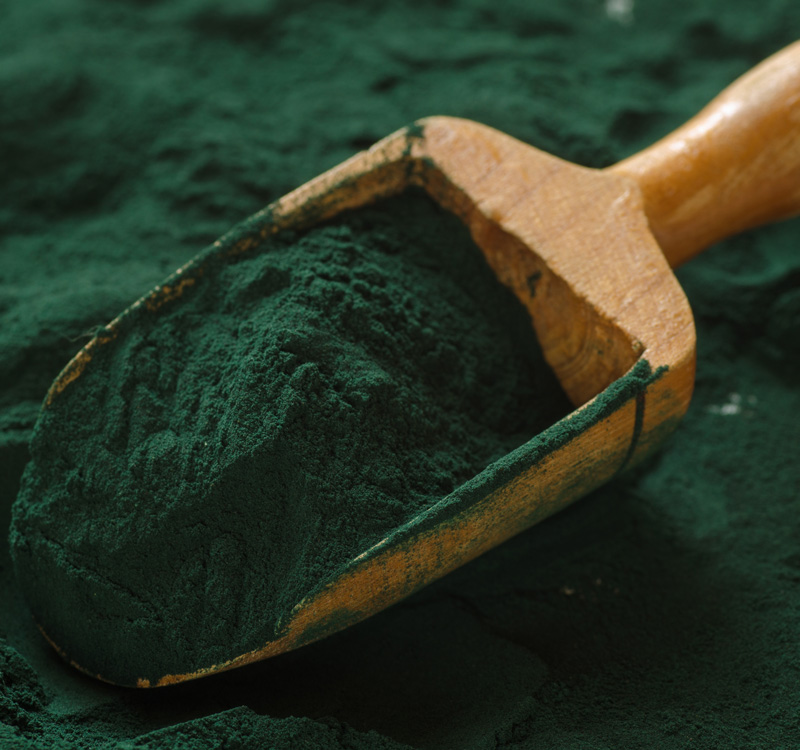



























There has been an explosive growth in the natural food colour market over the last few years, with major companies announcing their switch from artificial to all-natural ingredients. Health and fitness are becoming more important in everyday life. Consumers are also getting increasingly aware of what they are putting in their bodies. This has created a demand for the food & beverage industry to join the revolution.
Spirulina extract was first approved by the FDA as a food additive for applications in the gum and candy industries in 2013. Since then, there has been a rapid increase in the usage of this super-food.
In 2014, the application list expanded to frosting, ice cream, frozen desserts, dessert coatings, toppings, beverage mixes, powders, yogurts, custards, puddings, cottage cheese, gelatin, breadcrumb, and ready-to-eat cereals.
2015 witnessed coatings in dietary supplements and pharmaceuticals get approved. The health benefits that spirulina extract brings to the table keeps growing the application list at a swift pace.



















Phycocyanin is the most important component of spirulina extract. It is a pigment-protein complex synthesized by blue-green microalgae such as Arthrospira (Spirulina) platensis. It plays an active role in the photosynthesis of cyanobacteria. It’s known for assisting the function of chlorophyll in low light conditions.
Phycocyanin has been recently gaining a lot of attention from the scientific community due it’s many potential health benefits.
Phycocyanin has been recognized as one of the most promising natural molecules in terms of inhibiting the pro-inflammatory COX-2 enzymes – which are linked to the phenomenon of inflammation and the associated pain, as they deteriorate cartilage and joints[1,2]
Phycocyanin is the only natural compound that is effective against asthma[3]
Phycocyanin’s anti-radical properties contribute to cell protection against damage from free radicals. It is also known for being neuroprotective owing to the positive effects on oxidative stress[4,5]
Phycocyanin contributes to the production of red blood cells and thus promotes the transport of oxygen to the muscular and immune systems[6]
[1] Shih CM. & al. : Antiinflammatory and antihyperalgesic activity of C-phycocyanin. Anesth Analg. 2009 Apr;108(4):1303-10. doi: 10.1213/ane.0b013e318193e919.
[2] Reddy CM. & al. : Selective inhibition of cyclooxygenase-2 by C-phycocyanin, a biliprotein from Spirulina platensis. Biochem Biophys Res Commun. 2000 Nov 2;277(3):599-603.
[3] Remirez D. & al. : Role of histamine in the inhibitory effects of phycocyanin in experimental models of allergic inflammatory response. Mediators Inflamm. 2002 Apr; 11(2): 81–85.
[4] Mitra S. & al. : C-Phycocyanin protects against acute tributyltin chloride neurotoxicity by modulating glial cell activity along with its anti-oxidant and anti-inflammatory property: A comparative efficacy evaluation with N-acetyl cysteine in adult rat brain. Chem Biol Interact. 2015 Aug 5;238:138-50. doi: 10.1016/j.cbi.2015.06.016.
[5] Min et al. Assessment of C-phycocyanin effect on astrocytes-mediated neuroprotection against oxidative brain injury using 2D and 3D astrocyte tissue model. Scientific Reports volume5, Article number: 14418 (2015) doi:10.1038/srep14418.
[6] Zhang Cheng-Wu et al. April 1994. Pub. In Proc. of Second Asia Pacific Conf. On Algal Biotech. Univ of Malaysia. P.58. China.













Are you ready to transform your business with Algavista? Reach out to us and explore our range of natural food colours and nutraceuticals.
Fill out the form, drop us an email at info@algavista.murugappa.com or give us a call on +91 4425306597/6487.